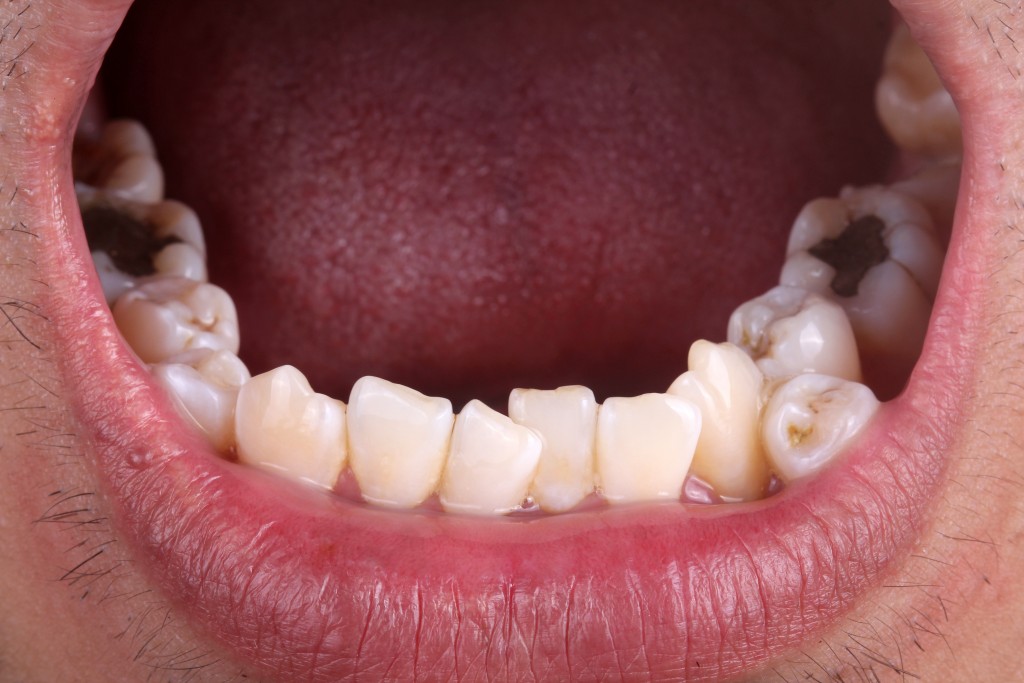Teeth are essential parts of the body intended for breaking down food, when they start to misalign, several problems may occur. But before we discuss the different affordable dental treatments and ortho appliances to get them fixed, let’s talk about the common causes of crooked and misaligned teeth.
-
Jaw Size
The food today is processed and softer compared to the food in the ancestral times, making it easier for us to chew. But the price is smaller jaw since there is less movement in the mouth. And according to some scientists, that’s one of the culprits for crowded and crooked teeth.
-
Poor Myofunctional Habits
Poor myofunctional habits refer to repetitive manners that have substantial effects to the teeth muscle and bones such as mouth breathing, pacifier, thumb and finger sucking, and tongue thrusting.
-
Misaligned Jaw
If the points of your upper teeth don’t fit into the grooves of your lower teeth, it will result in misaligned teeth. The common misalignment problems are overbite and underbite. Overbite refers to the protrusion of the upper teeth, while underbite is the prominence of the lower teeth.
-
Genetics and Heredity
Crooked teeth can sometimes be inherited. If either of the parents has a history of overbite or underbite there’s a tendency for the child to develop the same problem later.
-
Poor Dental Care
Poor dental hygiene may lead to gum diseases such as gingivitis and cavities. Over time, they can lead to crooked and broken teeth.
-
Poor Nutrition
If a child isn’t getting enough nutrition, the mouth muscles may fail to develop which may also result in crooked teeth.
What Are the Problems that Come with Crooked Teeth?
- Jaw pain
- Difficulty chewing
- Inability to reach certain crevices increasing the risk of tooth decay
- Speech difficulties
- Changes in facial features
- Being more conscious of your appearance which affects self-esteem
How to Straighten Crooked Teeth?
Luckily, the treatments for crooked teeth have long been invented. If you wish to get your teeth straighten, here are several options you may want to check out:
Metal Braces
Metal braces consist of brackets, bands, and flexible wire. These are attached firmly to the teeth. Metal braces are the conventional treatment and commonly used for patients with complex dental issues. The progress may take some time, but metal braces are proven to improve the teeth appearance. Talk to your dentist or orthodontics to find out if metal braces are the ideal treatment for you.

Invisible Braces
These work similarly with metal braces, the only difference is they’re transparent, which means that they are nearly invisible. They were invented in 1997 by the Stanford University students, Zia Chishti and Kelsey Wirth, as an alternative for a retainer.
They’re made of clear plastic aligners that are made to fit the patient’s teeth. Compared to metal braces, invisible braces work faster. In as early as 24 months, you can get the result that you want. The only downside is you can’t eat with them, you have to take them off every time. The price is also more expensive which ranges from $3,500 to $8,500.
Ceramic Braces
Ceramic braces are connected with an archwire which is tooth-colored making them less noticeable than metal braces. However, these are prone to stains and get damaged easily. They’re recommended for patients who dislike the idea of a mouth filled with metal brackets.
Lingual Braces
These are another form of invisible braces that are attached to the lingual surface or the side of the teeth that faces your tongue. These aren’t for everyone, and they aren’t advisable for severely crooked teeth. They are also hard to clean and costly, with the price ranging from $5,000 and $13,000.
Teeth Straightening Surgery
Teeth straightening surgery is another option for those who would like to see immediate results or lessen the amount of time wearing braces. This usually involves surgical procedures including repositioning the bones and gums and jaw realignment.
Repositioning the bones is done to help hold the teeth in place, while jaw realignment is required for patients with speech and chewing difficulty. The price may depend on your location and dentist rate.
If left untreated, crooked teeth may result in more serious dental problems such as broken teeth and bones. So, don’t delay your visit to the dentist. It’s best to get your teeth fixed. After all, our teeth deserve great care as they allow us to chew food and speak confidently. Visit a dentist today and ask about which dental treatment is right for you.



















